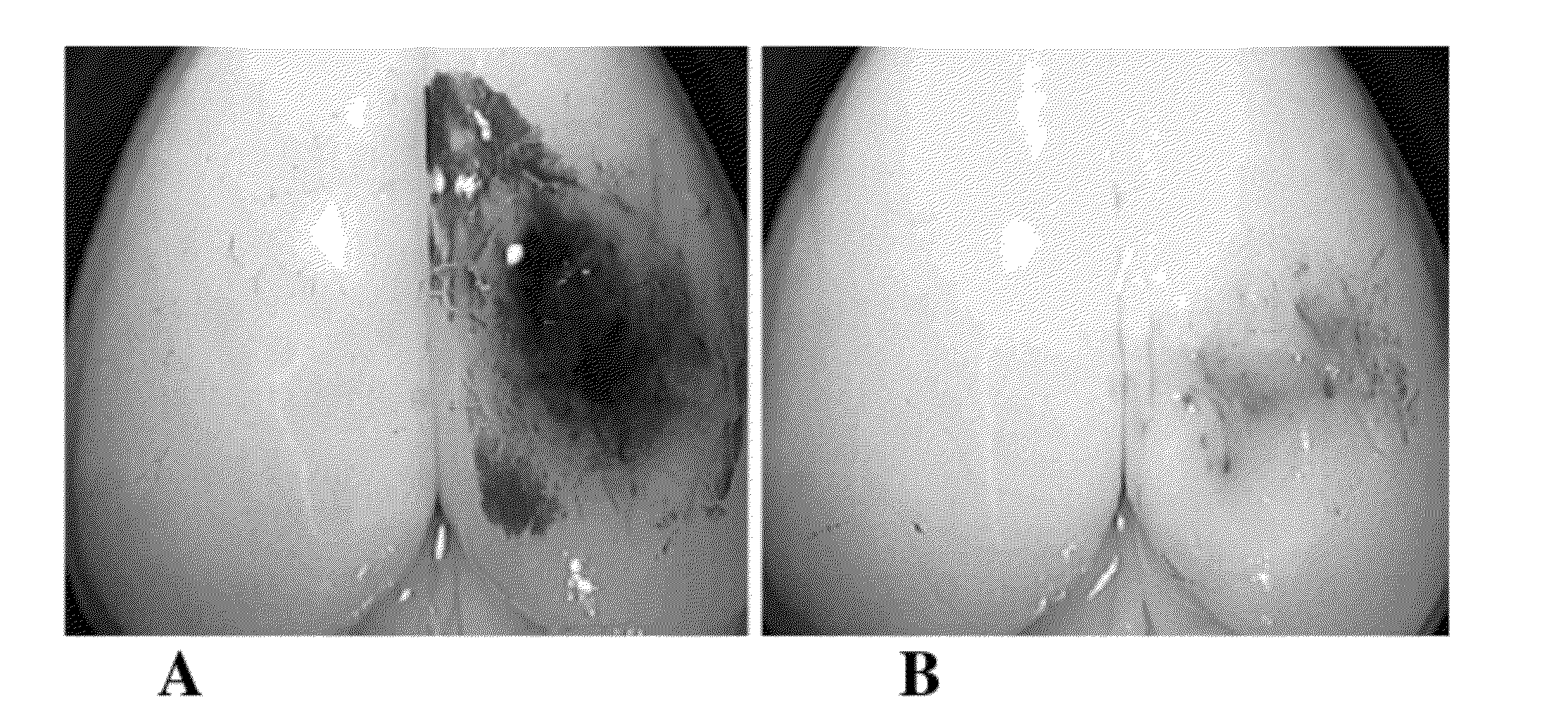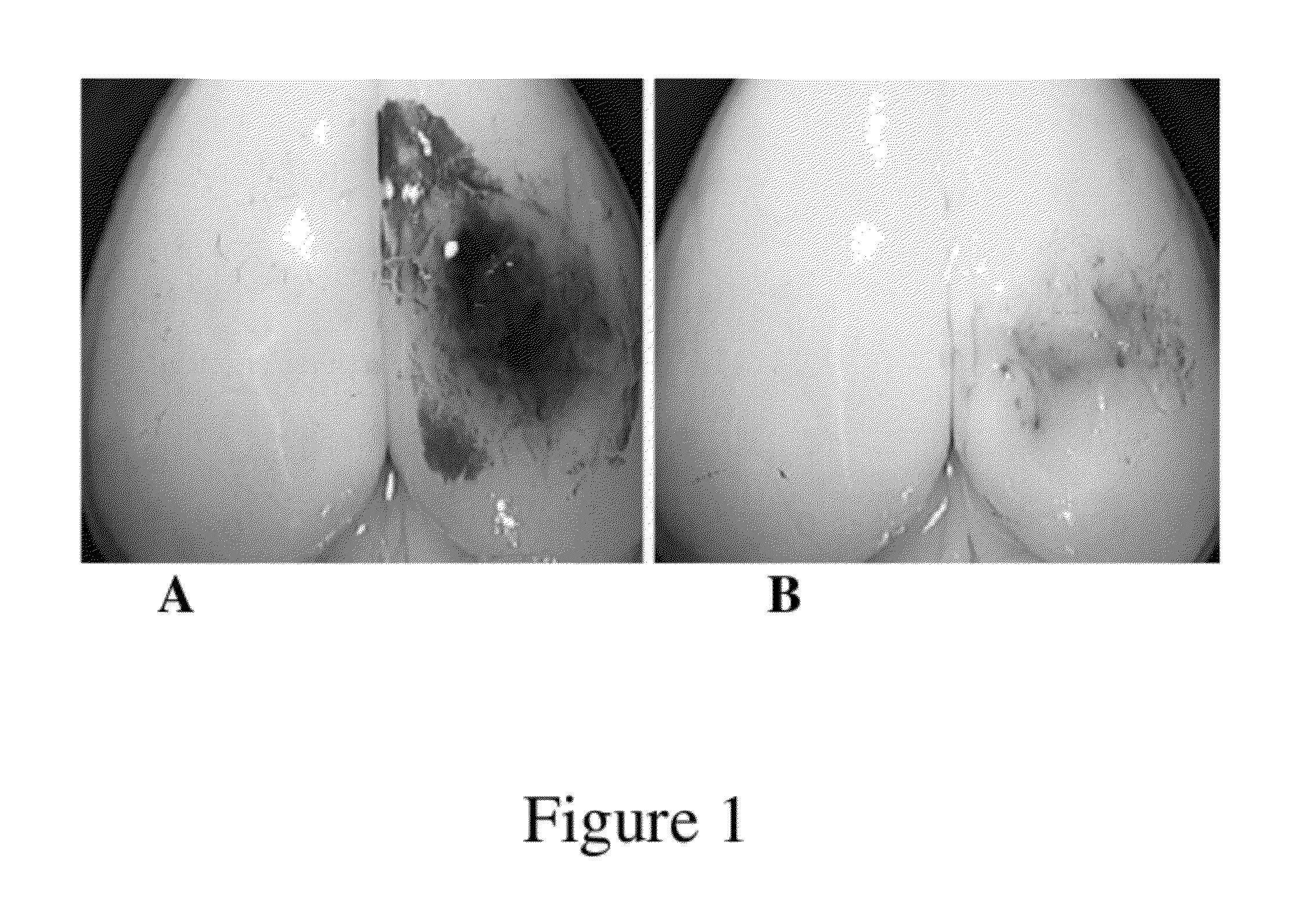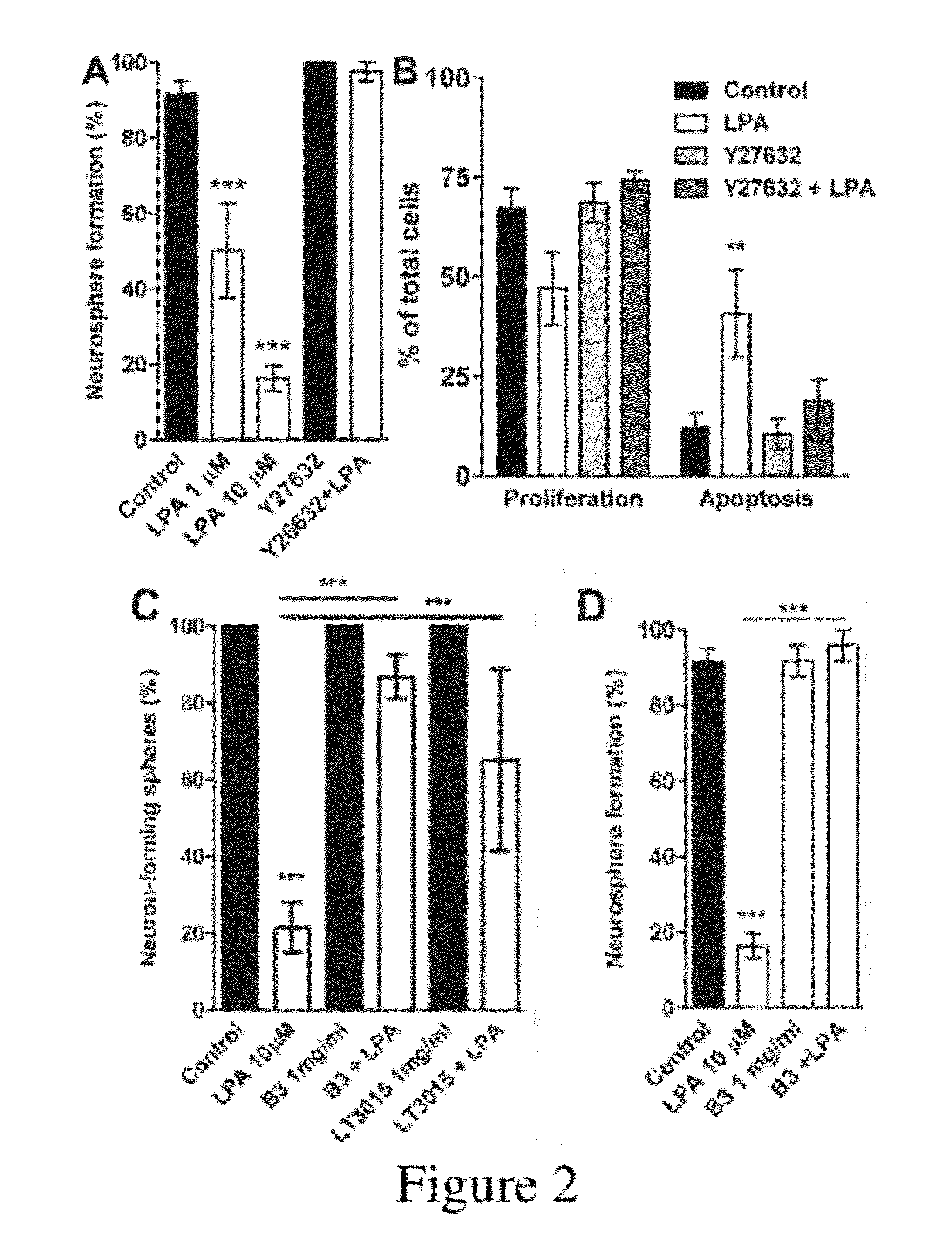Methods of increasing neuronal differentiation using antibodies to lysophosphatidic acid
- Summary
- Abstract
- Description
- Claims
- Application Information
AI Technical Summary
Benefits of technology
Problems solved by technology
Method used
Image
Examples
example 1
Neurosphere Formation, Treatment, and Differentiation
[0138]Neurospheres were formed and cultured as described in Dottori, et al. (2008), supra. Briefly, human embryonic stem cells (HES-2, HES-3, and HES-4, WiCell Research Institute, Madison Wis.) were cultured according to previously published methods. Neuronal induction using noggin was performed according to published methods and after growth and subculture, cells were grown as neurospheres in the presence of growth factors. Neurospheres could be plated on dishes coated with laminin or fibronectin. When plated onto laminin and cultured with neural basal medium (NBM, R&D Systems, Minneapolis Minn.), neurospheres typically differentiate into neurons. Quantitation of neuron-forming spheres (a measure of neuronal differentiation) was done by counting the number of neurospheres from which neuronal outgrowth was visible. Neurospheres that failed to attach to the plate were not counted.
[0139]Plated neurospheres were incubated in the pres...
example 2
LPA Inhibits Neurosphere Formation and Neuronal Differentiation
[0140]As shown by Dottori, et al., LPA inhibits the ability of NSC to form neurospheres, even in the presence of bFGF and EGF. Briefly, noggin-treated cells were incubated in the presence or absence of LPA while being subcultured in suspension in NBM with bFGF and EGF (20 ng / ml each) for 11-14 days. The number of neurospheres formed was counted and it was found that in the presence of 10 μM LPA, 13.47%±6.94% of cultures formed neurospheres, compared to 48.60%±8.15% for control cultures untreated with LPA. Dottori, M. et al. (2008), supra.
[0141]The effect of LPA on an additional differentiation step, the differentiation of NSC toward mature cells, was also measured. When plated on laminin in NBM, neurospheres typically differentiate into neurons, as assayed by visible neurons, elongated cell shape and / or positive staining for β-tubulin. Dottori, et al. observed the formation of elongated cells positive for β-tubulin in th...
example 3
Anti-LPA Antibodies Block LPA Inhibition of Neurosphere Formation
[0142]Using the conditions used in Example 2 for LPA treatment alone, noggin-treated cells were incubated in the presence or absence of LPA while being subcultured in suspension in NBM with bFGF and EGF (20 ng / ml each) for 5-7 days. The number of neurospheres formed was counted and it was found that in the presence of 10 μM LPA, as before, neurosphere formation was decreased (n≧3). Whereas control cells yielded 90.482±5.346% neurosphere formation, cells treated with 10 μM LPA yielded only 13.500±5.590% neurosphere formation. Cells treated with LPA at 1 μM, in contrast, yielded 50±12.50% neurosphere formation. Anti-LPA antibody B3 alone gave neurosphere formation comparable to control (91.667±8.333% for 0.1 mg / ml B3 and 91.667±4.167% at 1.0 mg / ml B3). Notably, the combination of 1 mg / ml B3 and 10 μM LPA also gave neurosphere formation comparable to control (95.833±4.167%), indicating that the antibody to LPA had blocked...
PUM
| Property | Measurement | Unit |
|---|---|---|
| Temperature | aaaaa | aaaaa |
| Volume | aaaaa | aaaaa |
| Volume | aaaaa | aaaaa |
Abstract
Description
Claims
Application Information
 Login to View More
Login to View More - R&D
- Intellectual Property
- Life Sciences
- Materials
- Tech Scout
- Unparalleled Data Quality
- Higher Quality Content
- 60% Fewer Hallucinations
Browse by: Latest US Patents, China's latest patents, Technical Efficacy Thesaurus, Application Domain, Technology Topic, Popular Technical Reports.
© 2025 PatSnap. All rights reserved.Legal|Privacy policy|Modern Slavery Act Transparency Statement|Sitemap|About US| Contact US: help@patsnap.com



